
No energy turnaround
without heat transition
Shape your own energy transition!
According to the German Federal Environment Agency, electricity consumption and heating account for 22 per cent of our CO2 emissions. Electricity accounts for 7 per cent and heating for 15 per cent! Heating therefore pollutes our environment twice as much as electricity consumption.
The solar energy yield of our PRISMA® PVT collectors takes this into account. The thermal efficiency (53%) of the collector is more than twice as high as the PV efficiency (20%). The module even produces 5-10 per cent more electrical energy on an annual average than standard photovoltaic collectors thanks to the cooling of the PV cells by means of the highly efficient copper absorber installed on the back. The waste heat generated by the cooling process can be ideally utilised to support the heating system. The maximised solar yield of the PRISMA® PVT therefore reduces your energy costs in the long term. At the same time, you support the reduction of CO2 emissions by avoiding the combustion of fossil fuels.
Conventional PV modules
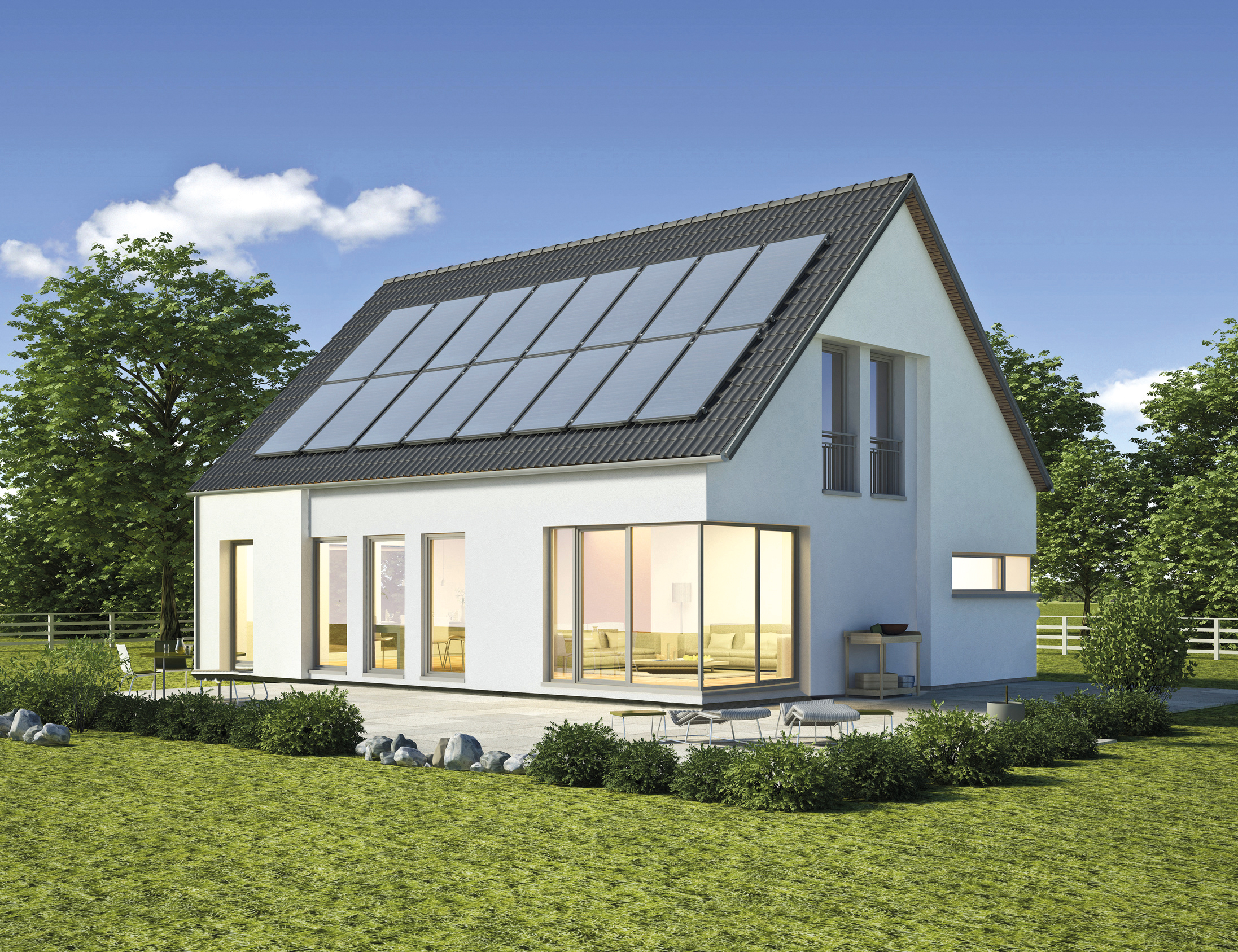
Ø annual yield of usable electricity: 7,200 kWh
Ø annual yield of usable heat: o kWh
In relation to: 16 PV modules at the Würzburg site.
Your roof can do more! Electricity and heat from one source means maximum energy harvest with limited space.
The roof area that can be used to install your home power station is limited. Roof windows, shaded areas due to chimneys, surrounding buildings or trees further limit this area. Your building's energy requirements for electricity and heat can only be met by optimising the energy use of the usable roof area. The aesthetic appearance of your building will not be affected even if PRISMA® PVT and pure PV modules of the same design are installed together. Everything looks as if it has been cast from a single mould.
Prisma® 4.0 PVT modules
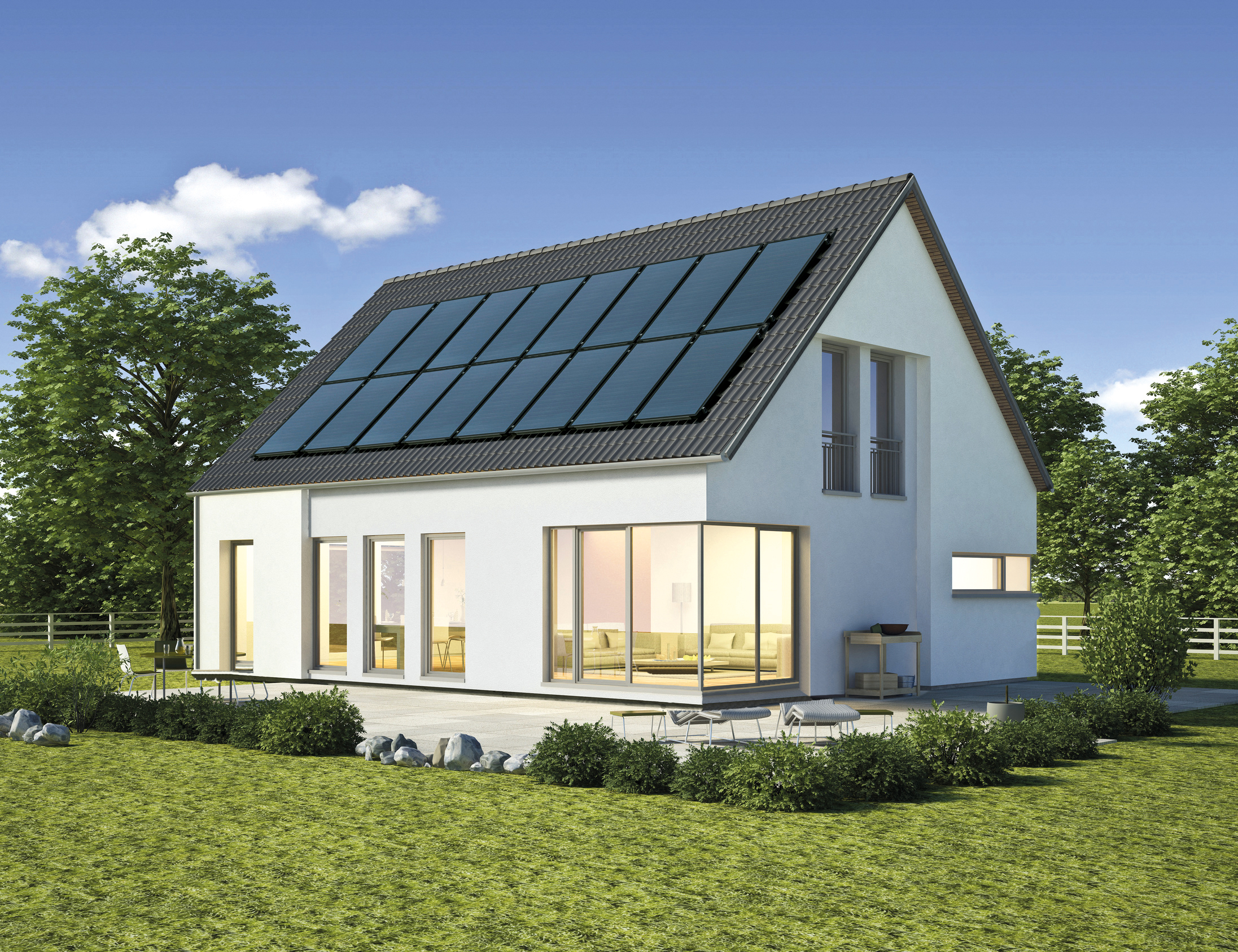
Ø annual yield of usable electricity: 7,560 kWh
Ø annual yield of usable heat: 12,800 kWh
In relation to: 16 PRISMA® PVT 4.0 collectors at the Würzburg site.
5% Additional electricity yield due to rear cooling.
Annual thermal and electrical output of the PRISMA® PVT 4.0 hybrid collector (cooled) at the reference site in Würzburg.
| Number of collectors | Annual thermal yield | Annual electrical yield |
|---|---|---|
| 1 | 800 kWh | 474 kWh |
| 6 | 4,800 kWh | 2,838 kWh |
| 8 | 6,400 kWh | 3,784 kWh |
| 10 | 8,000 kWh | 4,730 kWh |
| 14 | 11,200 kWh | 6,622kWh |
| 16 | 12,800 kWh | 7,568 kWh |
| 20 | 16,000 kWh | 9,460 kWh |
Bivalent operation of a brine heat pump with PRISMA® PVT 4.0 and geothermal baskets as the primary energy source.
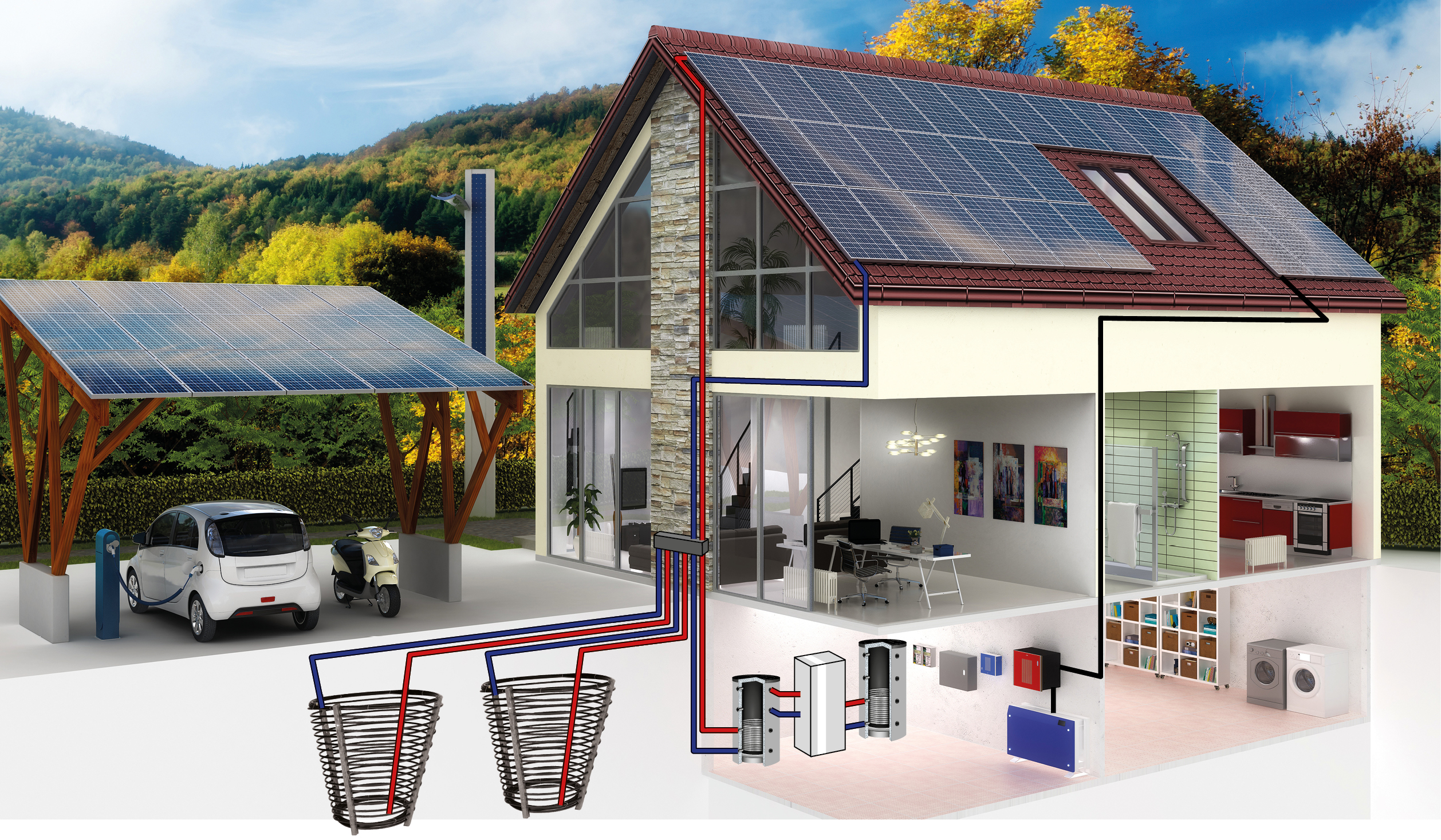
Geothermal probe drillings are not possible at every location due to water law or geological requirements. Air source heat pumps are often problematic in densely built-up areas due to noise emissions. The large area required for geothermal collectors is not available for every property.
As an alternative, geothermal baskets can be used more cost-effectively and with a high level of efficiency, while taking up very little space. These are installed below the frost line with a covering layer of 1.30-1.50 metres. This can also be done under a driveway with turf stones. In addition to this geothermal source, the brine heated by the PVT modules is used all year round as source energy for the heat pump. This energy is stored in the small primary energy storage tank via a heat exchanger. As long as the PVT system supplies thermal energy above 0° C, the primary energy circuit of the heat pump runs via this storage tank. If the temperature falls below 0° C, the system switches to the geothermal baskets.
The heat pump then raises the temperature level to the desired flow temperature and then loads the larger secondary cylinder. The X45/90 WP fresh water station heats the domestic hot water as required. In summer, excess energy from the solar thermal energy is dissipated into the surrounding soil via the geothermal baskets, which leads to a significant increase in the source temperature of the geothermal baskets in autumn and early winter. The electrical output of the photovoltaics supports the operation of the heat pump, if necessary using a solar battery.
This special system configuration means that, if the components are designed correctly, the heat pumps generally achieve higher annual coefficients of performance than when using boreholes with the usual drilling depths as the sole primary energy source. Due to the high regenerative share with a correspondingly high CO2 reduction, BAFA subsidises this innovative heating system. Further information here.
System concepts A and B, each eligible for BAFA funding
System concept A: with primary and secondary storage tank, PVT Heat energy transfer to the source side of the heat pump via primary brine storage tank
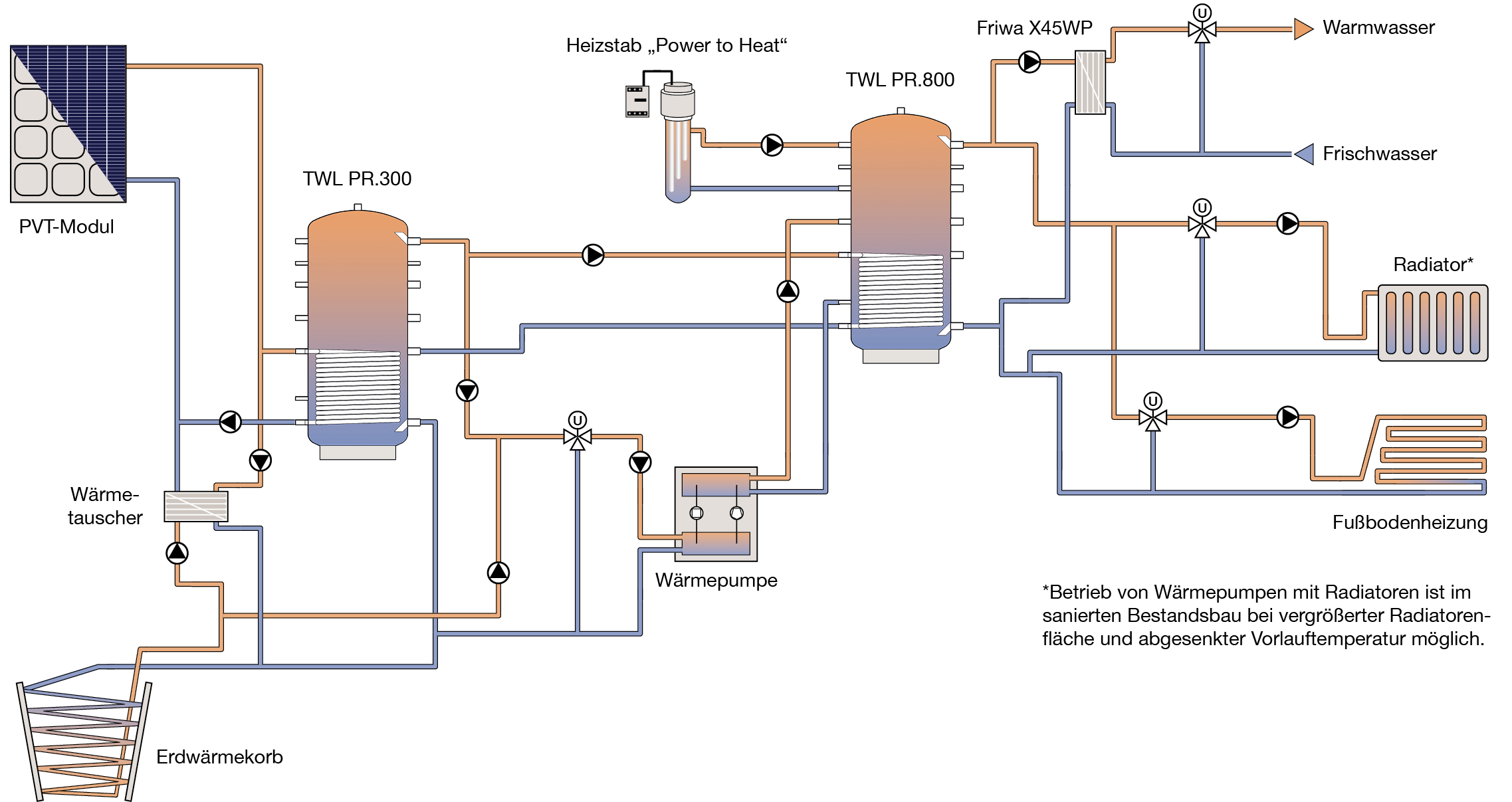
System concept B: with a buffer storage tank and PVT heat energy transfer to the source side of the heat pump via external heat exchangers
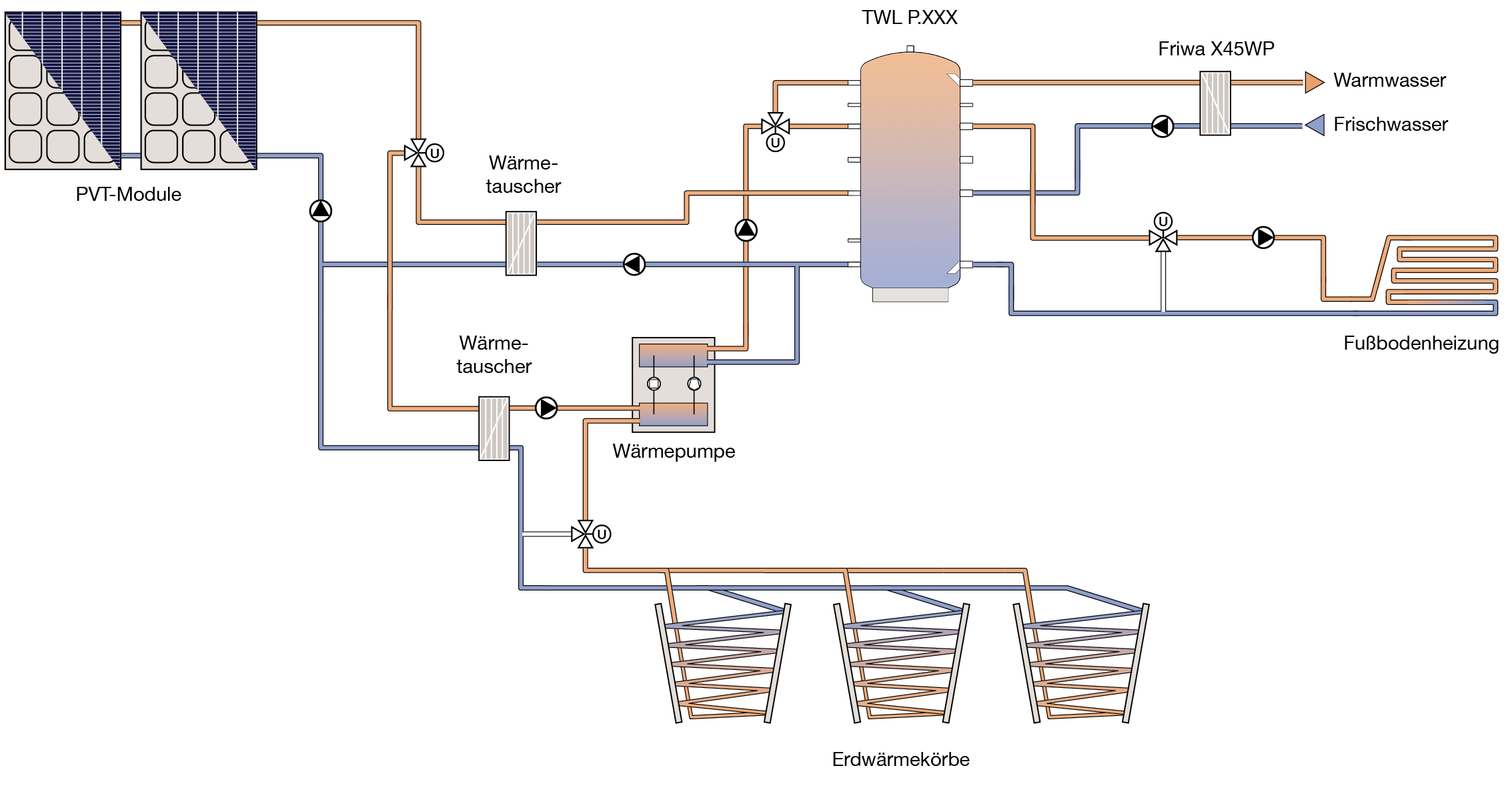
Solar domestic hot water heating and central heating backup in existing buildings using gas condensing boilers, biomass boilers or heat pumps.
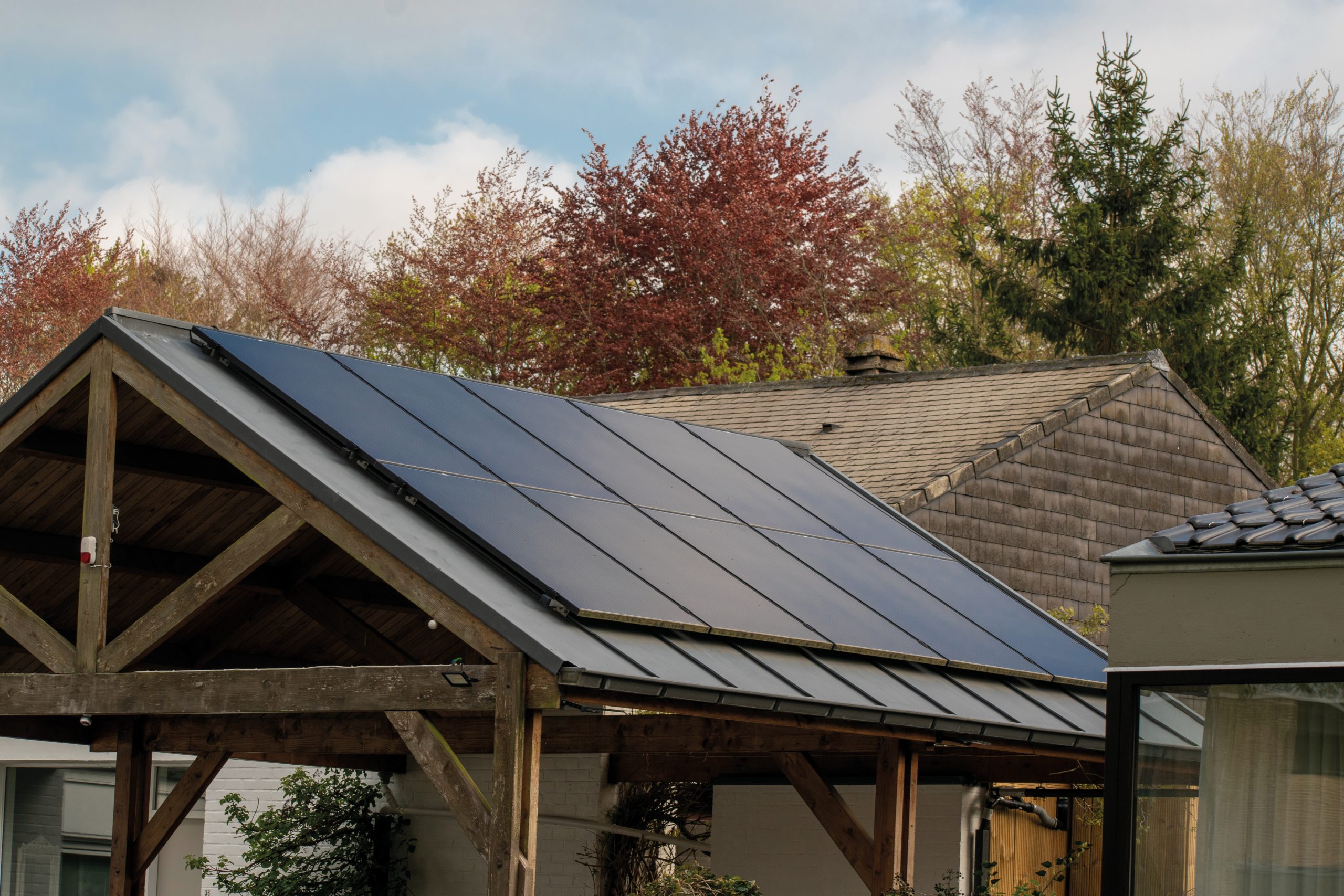
PRISMA® PVT supports the production of your hot water requirements. From March to October, your burner is significantly relieved by the solar thermal energy of the Prisma PVT 4.0. The switch-on time of your burner is significantly reduced and the switch-on intervals are extended. The less efficient operation during the heating-up phases of the burners is thus reduced in proportion to the total burning time of the boiler. As a result, fuel consumption is significantly reduced. You save money.
If you are thinking about installing a PV system in an existing building, a PRISMA® PVT system is an alternative that scores double points with the same space requirement on the roof. In addition to electricity, a significantly high proportion of your heat energy requirements are supplied free of charge from the sun. The installation costs for the PVT system are not significantly higher than for a PV system alone.
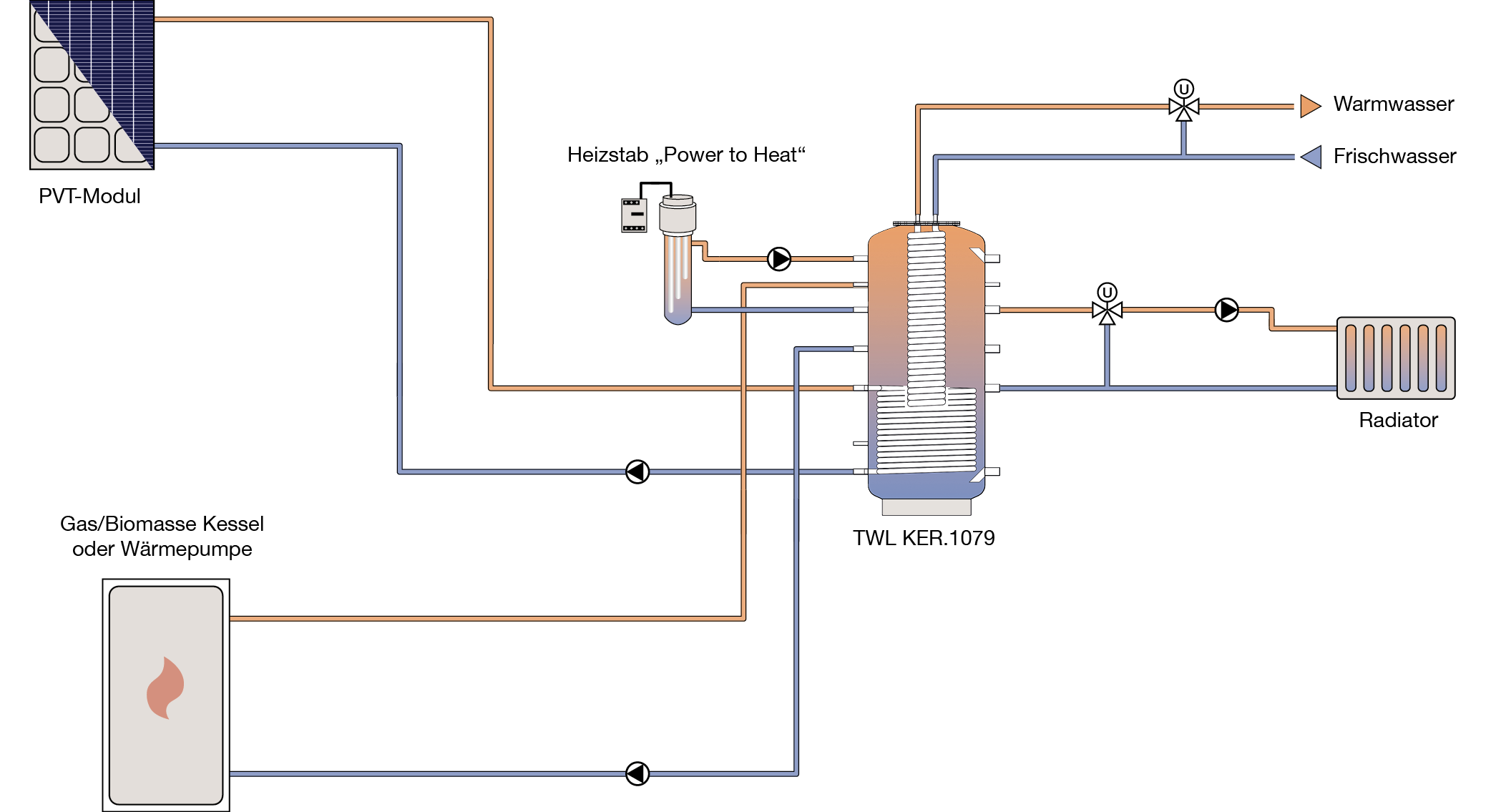
System components
For the above system concepts, we recommend the following main components from our extensive product range.
TWL
Buffer storage tank
PR-300 / -500
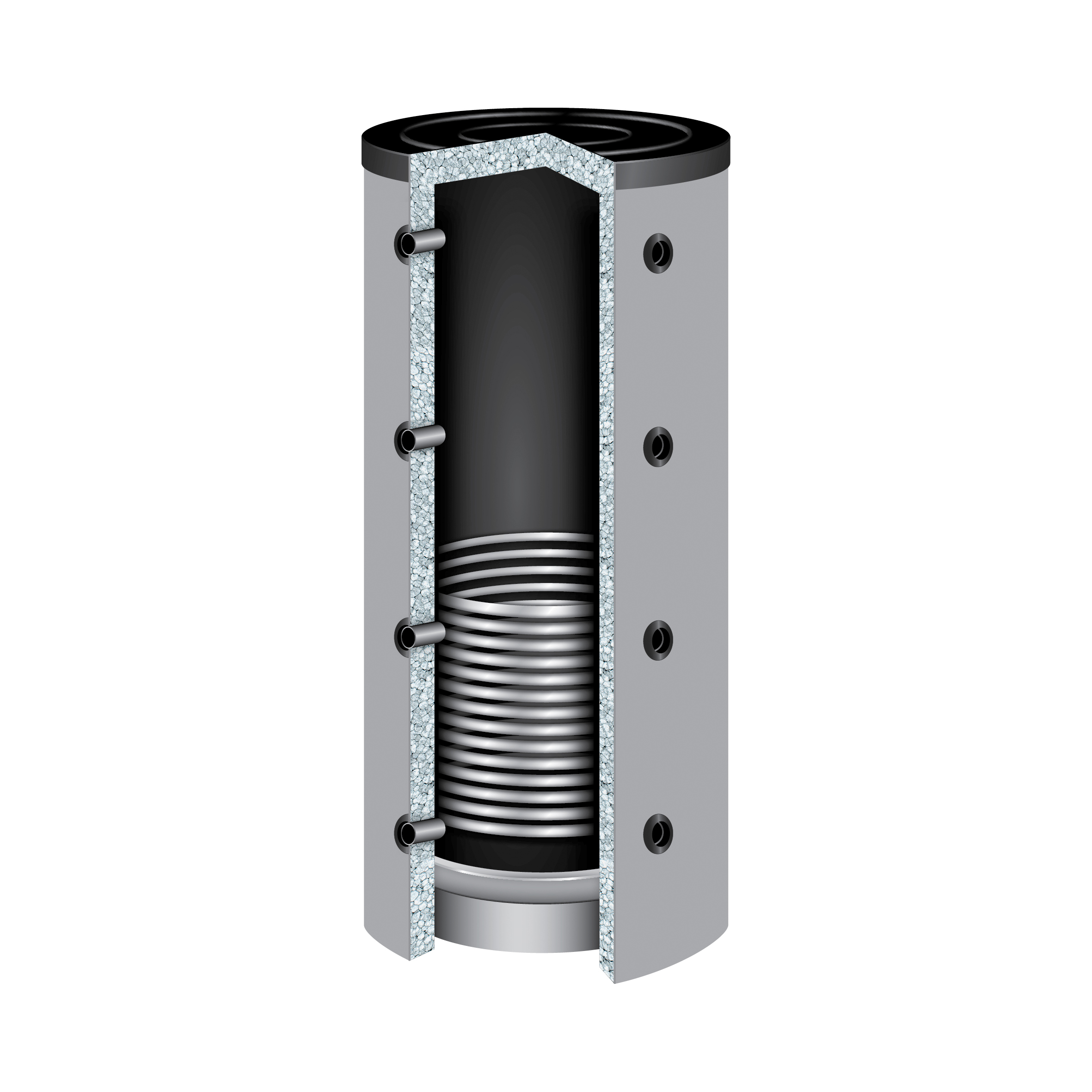
If the heat pump is supplied monovalently or bivalently with ground baskets via your PVT system, this buffer cylinder with a heat exchanger serves as the primary energy source. The heat pump pumps the thermal energy supplied by the PVT system in the low temperature range and stored in this primary storage tank to a higher temperature level and then stores it in the secondary storage tank.
TWL
Hygiene combi storage tank
KER-500 / -800 / -1000
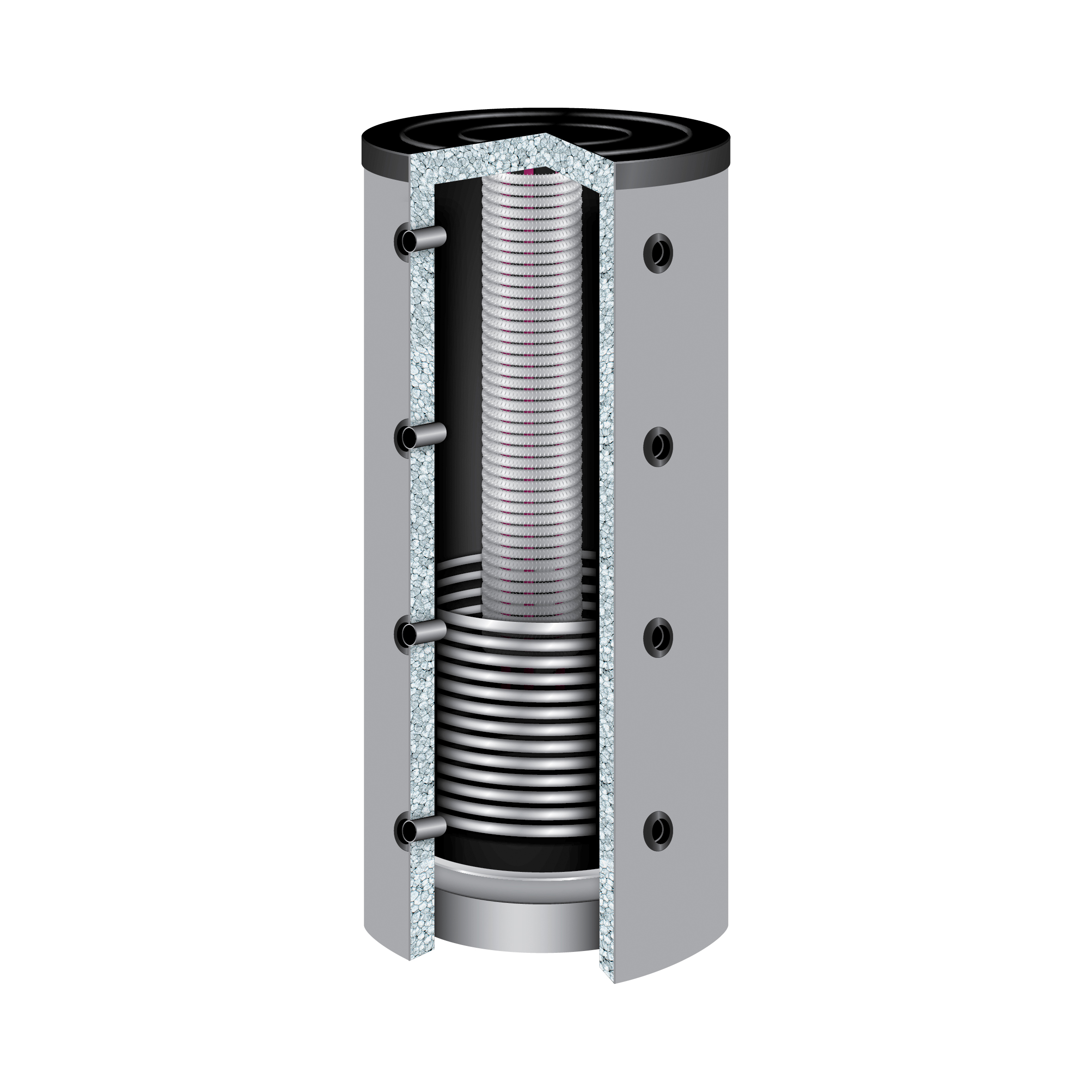
The TWL KER hygienic combination storage tanks are used if your heating system works together with conventional burner technology. The lower heat exchanger then extracts the absorbed heat from the solar thermal energy of the PVT system and releases it into the cylinder. Your boiler then raises the temperature to the desired level. There it is then available for the heating circuit or for domestic hot water heating. The corrugated stainless steel tube heat exchanger installed at the top is supplied by the domestic water connection and heats your hot water. Thanks to the small volume of 29 litres in the corrugated stainless steel pipe, you always have perfectly hygienic hot water at your disposal.
Oventrop solar station
Regusol LH 15
+ Deltasol MX controller
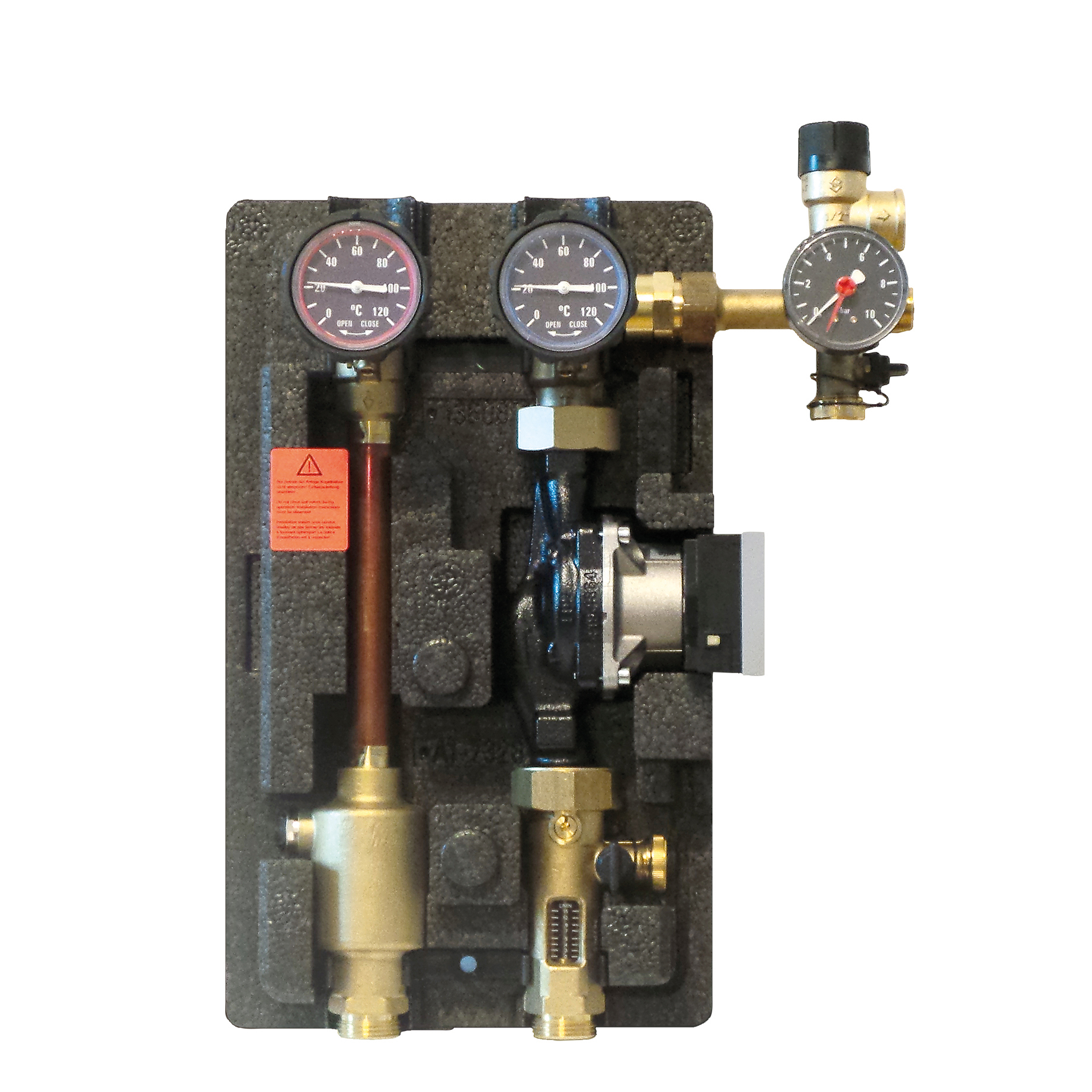
The Regusol LH15 is responsible for circulating the solar fluid in the PVT collector array. The flow rate can be precisely adjusted to the system hydraulics and weather conditions. The permanent deaeration keeps the system free of air and thus ensures trouble-free operation of the circulation pump. The DeltaSol MX temperature difference controller regulates the circulation pump to the optimum speed and synchronises the temperatures in the collector array with the cylinder temperature. This ensures the maximum solar yield from your PVT collector array.
Oventrop
Fresh water station
Regumaq X45 WP / X80
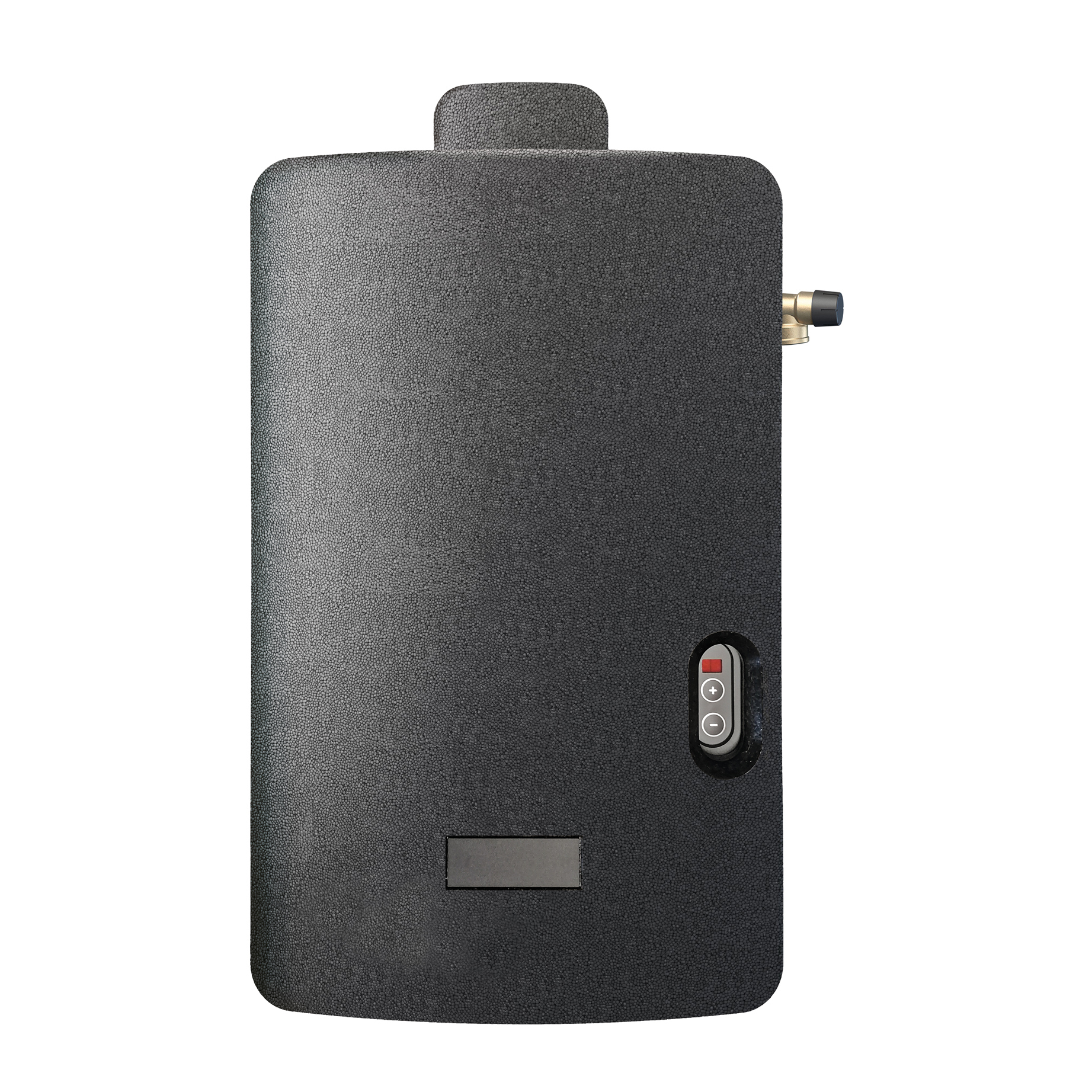
The Regumaq fresh water stations are optimised for heat pumps or solar thermal energy sources. A highly efficient stainless steel heat exchanger extracts the heat extremely effectively from the upper section of the buffer cylinder and transfers it to your hot water supply. Due to the small volume of the heat exchanger, there is no risk of legionella forming. The Regumaq fresh water stations can optionally be fitted with a DHW circulation set.

